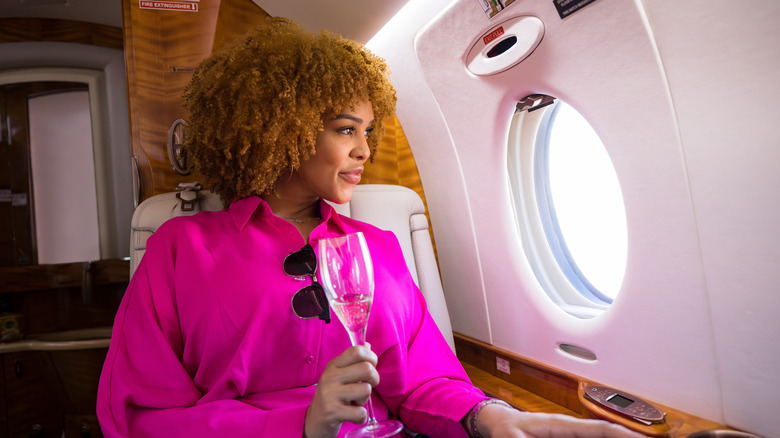The Unsettling Reason To Avoid First Class Seats
We may receive a commission on purchases made from links.
If you're lucky enough to book a ticket in the first class cabin for your flight, you're going to be sitting in the lap of luxury. You get perks like priority check-in, exclusive in-flight meals, and certainly more space than economy class. Whether you plan on buying a first class ticket outright or get an upgrade with loyalty points, you can just sit back and relax while you're whisked off to your destination. However, there is one unsettling reason that you may want to avoid these premium seats.
TIME recently examined data from the Federal Aviation Administration's CSRTG Aircraft Accident Database. After studying the 17 crashes that had seating charts available, they found that the front of the plane, where first class is located, is the least safe in the event of a crash, followed by the middle seats and then the back.
While first class may get you perks, the unwanted middle seats in the last row of the airplane are the safest spots. That said, flying is a very safe way to travel. According to the Massachusetts Institute of Technology (MIT), the risk of death while flying was one in 13.7 million from 2018 to 2022, which is an improvement from the statistics of past decades. Still, if you have a fear of flying, anything you can do to make yourself more comfortable is a good thing.
The safest seats on a flight and how to handle your flight anxiety
If you're a nervous flier, you may read all the statistics about plane safety and still worry. You're not alone. Over 25 million Americans report having aerophobia. Sitting in the back, knowing it's the safest spot, may help you lessen your anxiety a bit. You can also book the best flight time to avoid turbulence, either late at night or early in the morning. Learning about how planes work can help as well. Some great books include "How to Overcome Fear of Flying" by Captain Ron Nielsen and "Soar: The Breakthrough Treatment for Fear of Flying" by Captain Tom Bunn, which you can get on Amazon.
Let the flight attendants know that you have a fear of flying when you board. That way, they can check in to see how you're coping and may be able to put you more at ease with their knowledge. Breathing techniques and mindfulness exercises can also help you cope with your anxiety over flying.
One technique used by Navy SEALs in high-stress situations is box breathing, in which you breathe in for a count of four, hold for a count of four, exhale for a count of four, and then hold again for a count of four. Ultimately, whichever seat you choose on the plane, one death per 13.7 million people is a very, very small risk. (Compared to the risk of dying in a vehicle, which is one in 112.) Skip first class if it makes you feel better, but know that you're likely safe no matter where you sit in an airplane.

